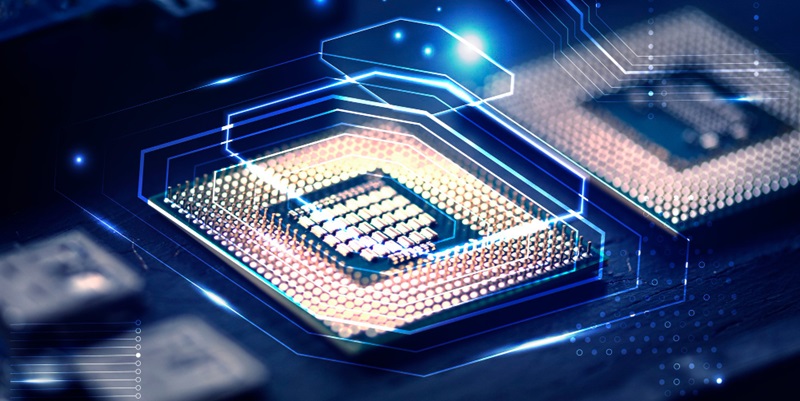In a move expected to shake up the tech industry, Intel is preparing to launch Arrow Lake as its next-generation processor, replacing the highly acclaimed Raptor Lake. This advanced chip marks a monumental transition for Intel as it embraces a new tile-based design, departing from the traditional monolithic chips of the past. With Arrow Lake, Intel aims to redefine desktop computing and propel its processors to new heights of performance and efficiency.
Transitioning to Tile-Based Design
Intel’s decision to adopt a tile-based design with Arrow Lake signifies a major shift in its CPU architecture. By breaking down the chip into smaller, interconnected tiles, Intel can now offer enhanced flexibility and scalability. Each tile serves as a self-contained processing unit, capable of executing tasks independently or in conjunction with other tiles. This revolutionary approach promises improved power management, reduced latency, and increased overall performance.
The Early Glimpse: Specifications and Features
Excitement surrounding Arrow Lake has reached new heights with the recent sighting of an intriguing chip online. This early prototype boasts an impressive specification profile, including a noteworthy thread count of 24. Although the clock speed is set at a conservative 3GHz, it must be noted that this hardware is likely being utilized for testing purposes, and higher frequencies can be expected in the final iteration.
Notable in this leaked prototype is the absence of the AVX-512 instruction set, a feature Intel has previously faced criticism for omitting. However, rumors suggest that Intel might reintroduce AVX-512 in a future E-core design, allowing users to take full advantage of its capabilities. This move reflects Intel’s commitment to meeting the diverse needs of its customers and addressing their demands for cutting-edge functionality.
Potential shift from hyper-threading
Another significant development to watch for in Arrow Lake is the potential abandonment of Hyper-Threading. Inspired by Apple’s ARM chips, Intel may choose to forgo this technology and instead offer a 24-core CPU configuration. This departure would streamline the architecture, allowing for optimized performance and improved resource allocation across cores. Such a decision would undoubtedly have a profound impact on the industry, pushing for more efficient and powerful computing experiences.
Testing phase and the pre-alpha stage
The sighting of the Arrow Lake chip provides valuable insights into its developmental progress. The CPU’s 3GHz clock speed, while modest, indicates that this prototype is in the early stages of hardware testing. Typically, initial prototypes feature conservative clock speeds to ensure stability and reliability during the validation process. Furthermore, the boot log’s labeling of the CPU’s stepping as 0 strongly suggests that Arrow Lake is still in a pre-alpha stage, with much refinement and optimization yet to come.
Speculation surrounding core configuration and features
Detailed information regarding Arrow Lake’s core configuration, clock speeds, and feature set remains elusive. Intel has wisely kept these aspects under wraps, heightening anticipation among tech enthusiasts and industry insiders alike. However, given Intel’s track record of innovation and unparalleled engineering prowess, it’s safe to assume that Arrow Lake will include cutting-edge features, improved thermal management, and remarkable overclocking potential, setting new standards for desktop CPUs.
Angstrom Era and Intel 20A Node
Arrow Lake holds a special significance for Intel as it represents the company’s first tile-based desktop CPU, built on the highly anticipated “Angstrom era” node, Intel 20A. With this node, Intel aims to elevate transistor density, power efficiency, and overall performance to unprecedented levels. The convergence of innovative design and next-gen node technology positions Arrow Lake as a monumental milestone in Intel’s desktop chip development.
The Foundation for the Future
Arrow Lake carries immense weight as it serves as the foundation for Intel’s desktop chips for years to come. With its tile-based design, optimized resource allocation, and cutting-edge features, this processor marks a turning point in Intel’s pursuit of computational excellence. As Arrow Lake makes its debut, it is poised to redefine what users can expect from their desktop computing experiences, unlocking new possibilities in gaming, content creation, AI, and more.
Intel’s upcoming launch of Arrow Lake signifies a sea change in the microprocessor industry. The transition from monolithic chips to a tile-based design opens doors to unprecedented processing power, improved efficiency, and enhanced user experiences. While many details remain shrouded in secrecy, the leaked information hints at the extraordinary potential of this next-generation CPU. It is clear that Arrow Lake aims to set new standards and solidify Intel’s position as a leader in desktop computing well into the future.

